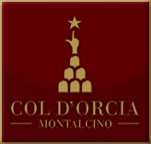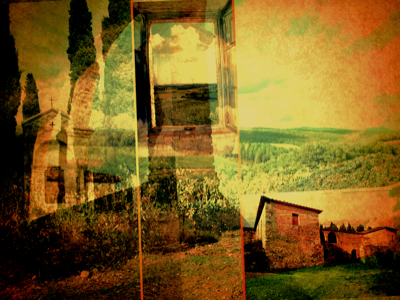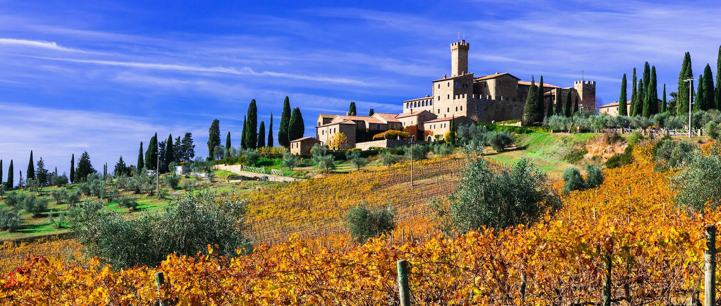
WINELINE MAGAZINE is a wholly owned subsidary of WinelineMedia, a Juris Corporation company / Winter Park, Florida, USA / +1 407.758.9931
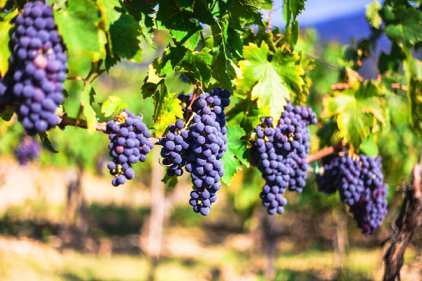
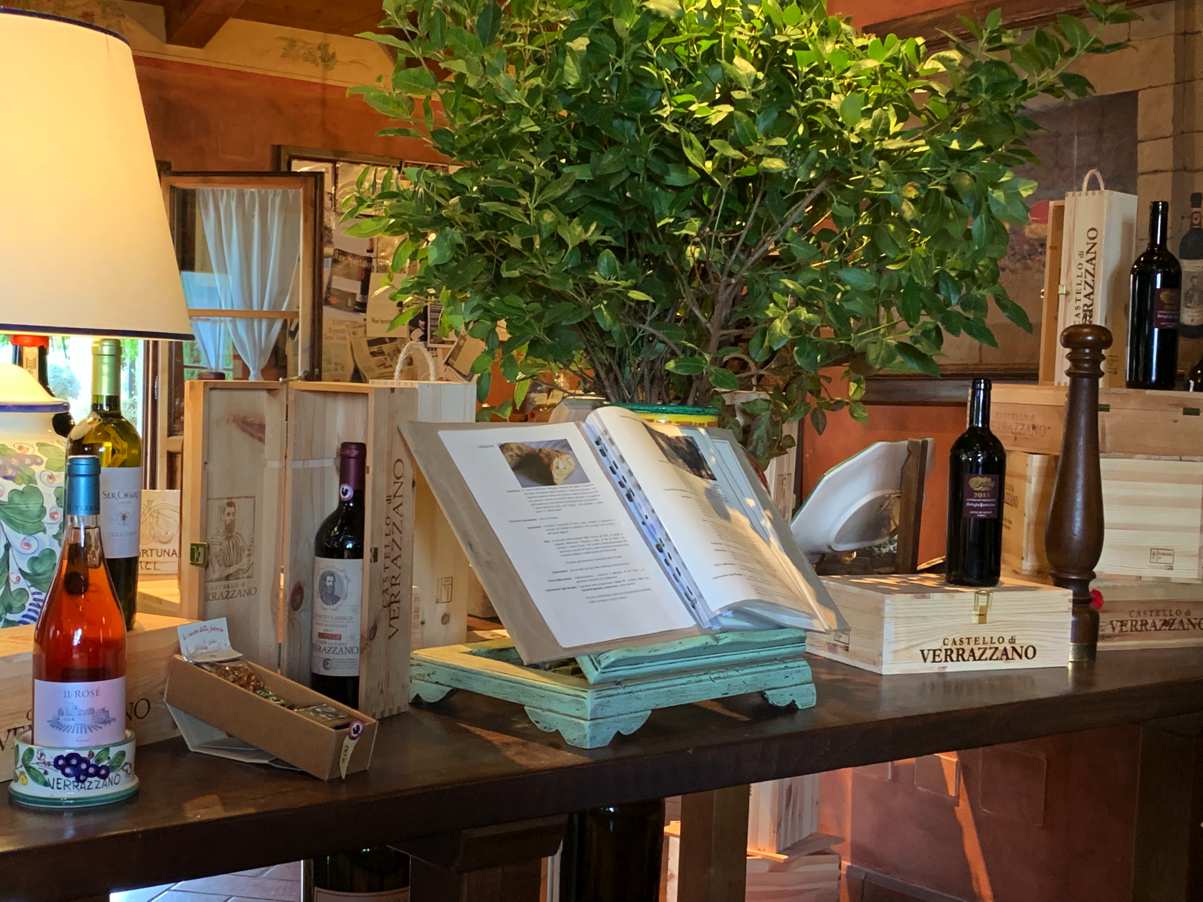
Wineline Magazine
TM
In-depth stories about wine, wine regions around the world, and the people who grow and produce the wines we love.
In this issue:
Volume 2 : TUSCANY
What the heck is the difference between Chianti and Chianti Classico?
Actually, they are two different appellations. Their grapes grow in different places and the rules for producing the wines are different. Let’s explore what each appellation has to offer, their locations and what differs one from another in terms of production.
Grapes for Chianti are allowed to be grown in the Tuscan provinces of Siena, Florence, Arezzo, Pisa, Prato and Pistoia.
Grapes for Chianti Classico can only be grown in provinces of Siena and Florence, which includes the towns of Barberino Val d’Elsa, Castellina in Chianti, Castelnuovo Berardenga, Gaiole in Chianti, Greve in Chianti, Poggibonsi, Radda in Chianti, San Casciano Val di Pesa, Tavarnelle Val di Pesa. These were the original townships where Chianti was first produced.
Sangiovese is the primary grape used in both Chianti and Chianti Classico. This is where the differences begin. Sangiovese is native to Italy. It offers high acidity which makes it a good food wine. It exhibits medium tannins and has flavors and aromas of red cherries, tea-like notes and some earthy notes as well. Th soil where Chianti is grown is galestro which is similar to schist and stony marl. The climate is usually warm during the day and cool at night. Sangiovese can be temperamental and often presents a challange to winemakers to draw the best characterists out oif the grape. The results can be both frustrating and rewarding. When the best narratives are drawn out of the grapoes, the results can be stunning.
In Chianti only 70% of Sangiovese is required to recieve the designation.
Chianti allows up to 10% of white grapes to be used in blending. In Chianti, the wine must be aged for a minimum of 3 months and 9 months for Chianti Superiore.
In Chianti Classico, you must have at least 80% of Sangiovese. And, all the grapes used must be red. In Chianti Classico, the minimum aging is 10 months.
Italy has designated specific areas to recieve the DOCG designation (Denominazione e Origine Controllata e Garantita). To receive DOCG, the winemaker must follow a strict set of rules that, just as the designation states, guarentee a certail level of quality. Let’s take a deeper look into the designation of DOCG.
CHIANTI DOCG is a region of approximately 38,000 acres of vineyards. There are sub-zones within Chianti DOCG: Colli Fiorentini, Colli Aretini, Colli Senesi, Colline Pisane , Chianti Rufina, Chianti Montespertoli and Chianti Montalbano. These sub-zones produce wines that are easy to drink. They have bright fruit flavors, especially red cherries. It the prefect “pizza wine.”
CHIANTI CLASSICO DOCG is much smaller in area, only 17,800 acres located between Florence and Siena and is considered to be the birthplace of Tuscan wines. In this region, the richest, fullest wines are produced. It recieved it designation in 1716 and is percieved as the top of the chart for Sangiovese. The wine produced here are more complex with abundant earth and spice characteristics. The wines require a one year period of rest before that can be sent to market. The wines are more developed and can be paired with dishes that are heartier such as bistecca alla fiorentina or more savory like pork or chicken with ample herbs. Hard cheeses pair well with Chianti Classico as well.
CHIANTI CLASSICO RISERVA is another step up the ladder of quality. It must be aged for 2 years in the barrel before it rests for 3 monthe in the bottle. It is a higher level of elegance and is considered a perfect wine for special events and dinners. Like Chianti Classico DOCG, the Riserva is perfect food wine exhibiting a balance of darker fruit with acidity and linguring tannins. The finish is long and rewarding. Great example are Fattoria Felsina’s Berardenga Chianti Classico Riserva and single vineyard Rancia Chianti Classico Riserva. At this level, prices begin to esclate yet, they are still affordable for spercial occasions.
CHIANTI CLASSICO GRAN SELEZIONE is a relatively new designation, decreed in 2014 and falls within Chianti Classico. It was designated to define wines of superior quality. The wine must be 100% estate grown fruit and must age a minium of 30 months in oak barrels. Many that carry this designation source their grapes from a single vineyard. Before release, the wines must undergo review from a strict italian tasting board and be assigned the Gran Selezione label. These are really special ocassion wines crafted to impress and carry a higher price tag such as Castello Di Fonterutoli Chianti Classico Gran Selezione by the Mazzei family which retails in the $50. - $70 range, depending on vintage.

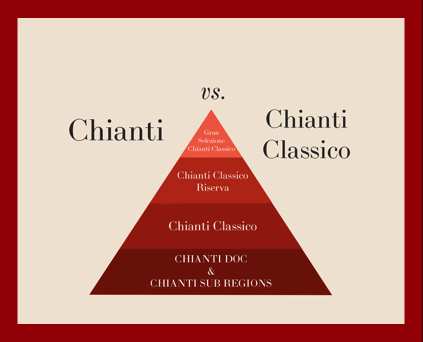
Sangiovese Grapes
Beyond Chianti and Chianti Classico is Brunello di Montalcino
Profile: Castello di Verrazzano, making wine since 1150
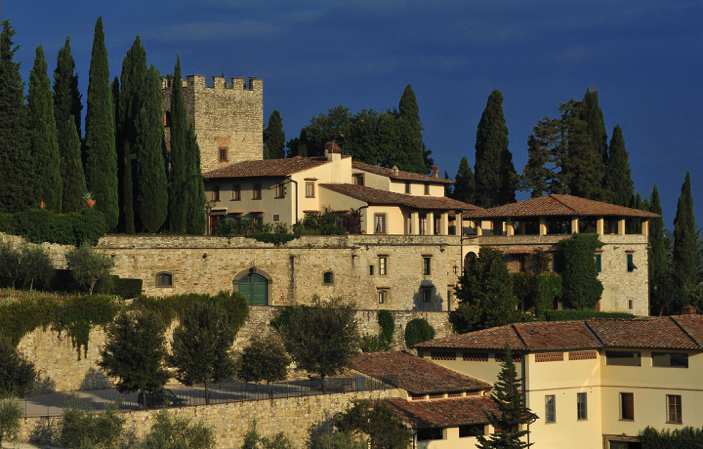

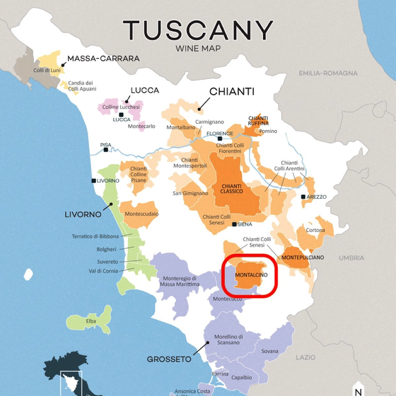
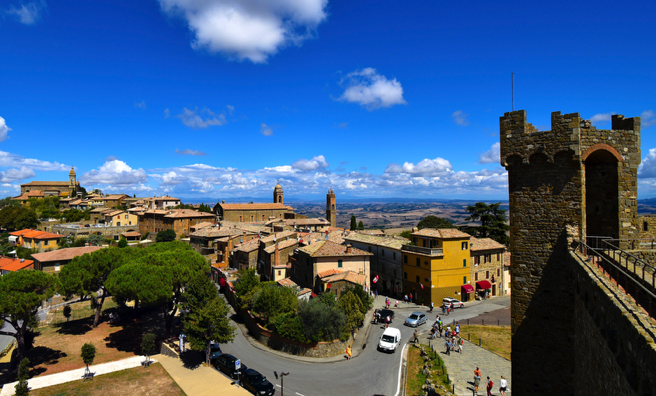
BRUNELLO VERSUS CHIANTI & VINO NOBILE DI MONTEPULCIANO
Tuscany is large and varied. Many miles separate, for example, the Chianti zone and Montalcino further south, which explains why the flavour and structure of Chianti and Brunello can vary enormously even in the same vintage.
Winemaking practices, not only of Chianti and Brunello mean that one has to wait, of course, to taste the same vintage side by side. But back to geography of both Chianti and Brunello. Within Chianti Classico, not only are there differences between the northern areas near Florence and the southern ones near Siena, but differences in altitude can also be significant. Meanwhile, areas such as Montepulciano and Montalcino are normally much warmer than Chianti Classico, which enabled their vines to survive the extreme heat of 2000 and 2003.
Chianti, brunello di Montalcino and vino nobile di Montepulciano are the greatest red wines of Tuscany. How one judges vino nobile di Montepulciano (pronounced VEE-no NO-be-lay dee moan-tay-pul-CHON-oh) depends largely on how one feels it compares with the first two.
All three are made from the Sangiovese grape, but chianti and brunello have far greater renown. If you think of vino nobile di Montepulciano as a glorified chianti, you'll probably conclude it is overrated and overpriced. But if you look at it as a junior brunello, your opinion will likely be much the opposite.
In fact, good vino nobile di Montepulciano, which sells for between $20 and $40 a bottle, can combine much of the best of both. Like chianti (particularly riserva-level chianti), it can be highly complex with seductive, satiny fruit. Like brunello, it can have a formidable, robust structure that promises exceptional aging ability. Since good brunellos start at about $40 - $50 these days, vino nobile di Montepulciano starts to look very interesting by comparison. Brunello is the only appellation that requires the wine to be made of 100-per-cent sangiovese. The others, depending on the specific appellation rules, can blend in up to 15 per cent of other grape varieties.
Brunello equals extra power and richness. Brunello is made in the southern part of Tuscany where it is warmer. It has limestone soils, which give sangiovese extra power and ripeness. The fruit quality tends to move toward the darker spectrum. The tannins are grippier, which means that they usually require more age before being drunk.
How the wine is made makes the biggest difference, especially in price. Brunellos traditional spend up to three years in oak casks and then up to a year in bottle before being released. Riserva wines have to be aged a full five years at the winery, split between in oak and bottle, before being released. This means the producers have to sit on inventory for a few years before receiving their money. This adds onto the cost.
Profile: Col D'Orca, famous for fine Brunello di Montalcino
Col d'Orcia literally means hill overlooking the Orcia River. The Orcia River marks the southwest border of the Brunello di Montalcino territory and the name of the farm is intrinsically linked to the physical location where the vineyards are planted. The mission of Col d'Orcia is to produce the best possible wines from this exceptional combination of soil and climate of this part of Montalciano.
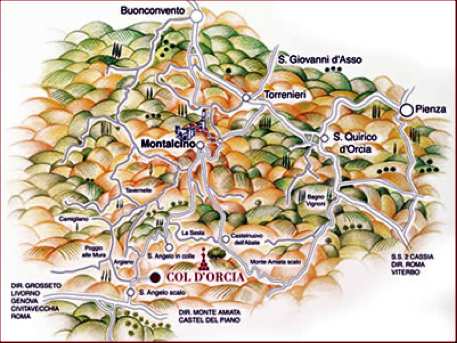
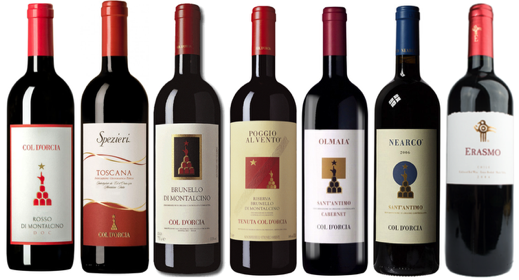
Wineline Media was hosted at Castello Verrazzano prior to the beginning of the pandemic when things were normal. Below is a video showing a small part of the hospitality we were treated to by the staff and ownership of Castello di Verrazzano. Should you be in the area of Greve in Chianti (near Florence) you should, by all means, arrange a visit.
The Castle of Verrazzano is located in Greve in Chianti, in the heart of the Chianti Classico area, between Florence and Siena. Initially the Castle was Etruscan then a Roman settlement and it has remained within its boundaries for over 1000 years: it has represented a firm and safe post in an area interested for many centuries by political and dynastic conflicts. There is a great tradition of winemaking here: the “vineyards situated in Verrazzano” are mentioned in a manuscript which dates back to 1150 and is preserved at the abbey of Passignano.
The Castle became the property of the Verrazzano family in the VII century. Giovanni da Verrazzano, the navigator and discoverer of the bay of New York and of the majority of the East coast of what is now the U.S.A. was born here in 1485. The famous bridge in New York between Brooklyn and Staten Island was named after him in 1964. The important Florentine family of Ridolfi succeeded the Verrazzanos after the death of the last descendant, in 1819. In the 1920s, Luigi Ridolfi promoted the building of the Football Stadium in Florence and in 1926 he founded the Fiorentina, the football team of the city of Florence. Ridolfi was the President of the Athletic Association and in 1936 he allowed the National Athletic team to train at Verrazzano for the Olympic Games.
In 1958 the Cappellini family took over the Castle which was on the road of decadence and brought it back it to its former glory by restoring the villa and rebuilding the agricultural tissue and the vineyards, according to an ancient model, respecting the historical and architectonic features of the place. Cavalier Cappellini understood since the beginning the importance of the history and the beauty of the Chianti area for a better promotion of farming productions. He laid the foundations for that awareness that inspired the institution of the Agritourism practice.
Vineyards, reimplanted by Cappellini Family starting from 1958, extend from the limit of the wood to the whole underlying valley, within boundaries unchanged from centuries. Fertilization is organic, vineyards are mechanically weeded and harvest is exclusively done by hand. The cut bunches selected during the growth enhances a deeper concentration in scent and tastes in the grapes and increases the quality of the wines. The clay-calcareous soil, the particular morphology, location (East exposure) and elevation (280-450m asl) create a unique terroir which characterizes all wines in a very original way for their scent, structure and longevity.
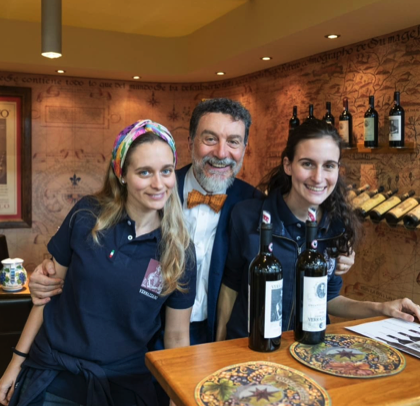
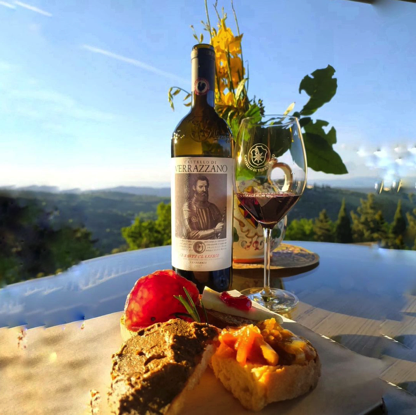
Francesco Cinzano
"In 1992, Francesco Cinzano took the reins of Col d'Orcia and continued to increase the plantings to the current level of 140 hectares, of whick 108 are Brunello-designated vineyards, making Col d'Orcia the third largest of Brunello vineyards in Montalcino."
Nicola Giannetti
"Nicola was an outstanding host. Not only did he give us an insiders tour of the lovely winery but also provided a thorough description of each wine as we tasted. It was a great experience and we look forward to returning soon."
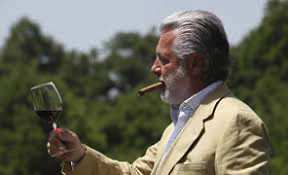
The Brunello grape is synonymous with the Sangiovese Grosso (aka Brunello) grape…in fact 100% the same. Brunelllo has been a wine varietal since being discovered in the early 14th century about 80 km south of Florence in the area surrounding the town of Montalcino. Thus, the given name for the wine, Brunello di Montalcino. Brunello wines are still considered one of Italy’s best and most expensive wines and is the only Tuscan wine that is not a blend. there are now two types of Brunellos…old school and new school. “Lovers of old-school Brunello look for the delicately ethereal aromas typical of the variety: forest floor, wild berries, violets and balsam (menthol or eucalyptus) backed by higher tannins and acidity for longer cellar aging. New schoolers are attracted to black cherry fruit and toasted vanilla notes from aging in smaller barrels—characters that yield a softer, consumer-friendly and ready-to-drink wine. Both styles exhibit freshness, balance and power, offering natural kinship to food, especially succulent grilled steaks.”
Profile: Banfi Winery, Leading the way with Brunello, hospitality and more

Banfi was founded in 1978 by brothers John and Harry Mariani. In the early days, they were looked on by the locals as newcomers. Their goal was to create a state-of-the art winery using the most advanced science in the vineyards. They sought out one of Italy's foremost enologists, Ezio Rivella to help with the project. Ezio understood that the microclimate and the rich soils of the property woulf create an opportunity for successful development.
John and Harry also purchased Bruzzone, a historic winery in Piedmonte which was originally founded in 1860. Bruzzone specialized in the production of sparkling wines... but, that is another story.
Banfi's hallmark is sustainability. This is reflected in all stages of the production. It is a comprehensive concept that creates harmony with the environment through the use of natural resources from the vineyards to the wine in the bottle. It's an integrated process that requires each action in the production chain to be socially fair, environmentally safe and economically feasible.
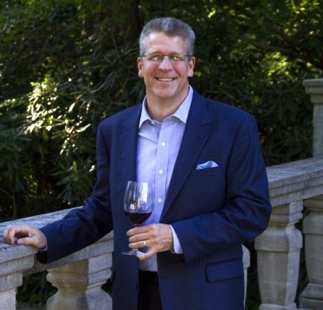
Cristina Mariani-May and her cousin James Mariani represent the third generation of family stewardship at Banfi Vintners.
Cristiani is a graduate of Georgetown University with her masters from Columbia School of Business. She coordinates Banfi's activities in Italy and the US. She is driven by "The Pursuit of Excellance" which represents a true personal mantra which has led to Banfi to be the first winery in the world to be awarded international recognition for ethical, social responsibility and environmental efforts.
James graduated from Colgate University and attained his Master's in Business Administration at Cornell University. He has successfully taken on the role of US sales and marketing, reorganizing and optimizing those departments.
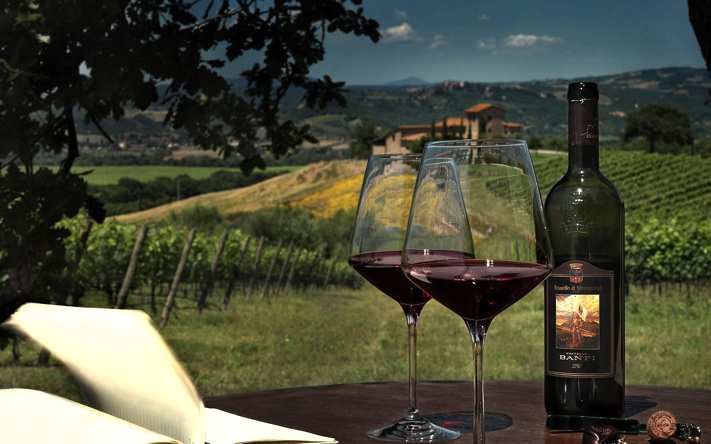

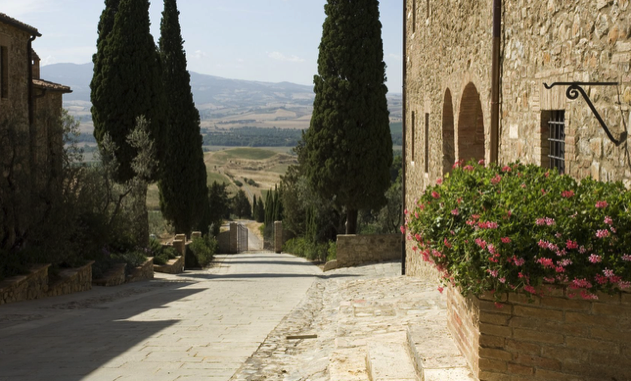
Resorting at Castello Banfi is a rare pleasure. The Il Borgo Hotel, two restaurants, the Enoteca, the Balsameria and the Glass Museum create a unique and varied experience in an elegant and beautiful place.
Il Borgo's ample rooms and suites are distinctly designed and original, embellished and decorated by hand, with premium fabrics and exclusive accessories which underline the inherent elegance of Il Borgo.
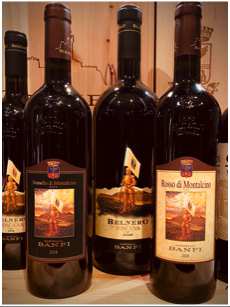
Banfi's Portfolio of Wines are extensive
Banfi's Il Borgo hospitality is well known by travelers seeking an upscale wine region experience
Grapes
• Cabernet Sauvignon
• Chardonnay
• Merlot
• Moscadello
• Pinot Grigio
• Sangiovese
• Syrah
White
• San Angelo, IGT Toscana (Pinot Grigio)
• Fontanelle, IGT Toscana (Chardonnay)
Dessert
• FloruS late harvest / Moscadello di Montalcino DOC (Moscadello)
Red
• Rosso di Montalcino DOC (Sangiovese)
• Poggio alle Mura DOC, Rosso di Montalcino DOC (Sangiovese)
• Brunello di Montalcino DOCG (Sangiovese)
• Poggio alle Mura DOCG, Brunello di Montalcino DOCG (Sangiovese)
• Poggio all’Oro Riserva, Brunello di Montalcino DOCG (Sangiovese)
• SummuS, IGT Toscana (Sangiovese, Cabernet Sauvignon, Syrah)
• ExcelsuS, IGT Toscana (Cabernet Sauvignon, Merlot)
• Cum Laude, IGT Toscana (Cabernet Sauvignon, Merlot, Syrah,
Sangiovese)
• Belnero, IGT Toscana (Sangiovese)
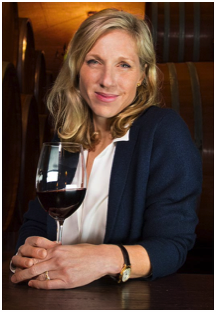
The wines of Col d'Orcia are among the most sought after among lovers of fine Brunello di Montalciano. Their offerings include Rosso Di Montalciano, Super Tuscans, Cabernet Sauvignon, Nearco (a Bordeaux blend).
As one of the original estates of Montalcino and now the largest certified organic estate in Tuscany, Col d’Orcia is a leader in Brunello di Montalcino, helping to define and promote one of Italy’s most prestigious wine regions. Tradition, integrity and sustainability are the pillars of the estate, whose classic style wines are celebrated all over the world. Located at about 1500 feet above sea level, the estate is favorably positioned against Mount Amiata (5,700 feet) which helps shield the property from floods and hail. The climate is typically Mediterranean, with limited rainfall coming in from the Tyrrhenian coast, 21 miles away.
Visit Col D'Orcia' website - Click here
Winery Artworks by Robert Sterling Scott
© Robert Sterling Scott / Orlando, FL / 2019 / All Rights Reserved
https://www.rsterlingscott.com/new-works-wineries.html
Chianti Classico & Beyond
GO to WINELINETV for important conversations with leading winemakers...

